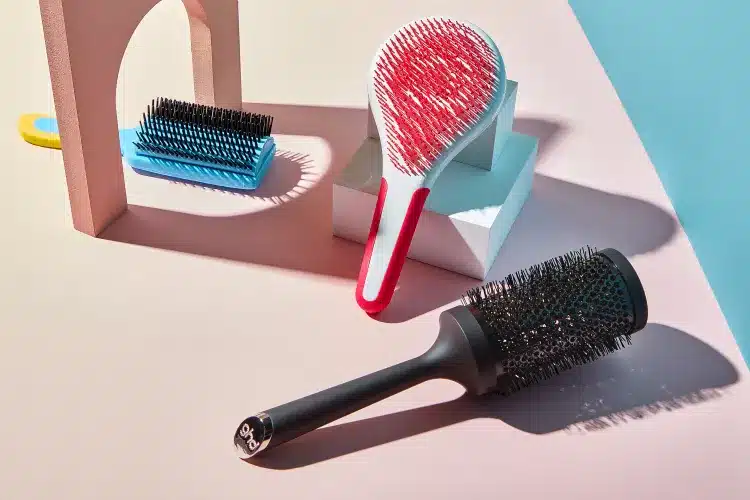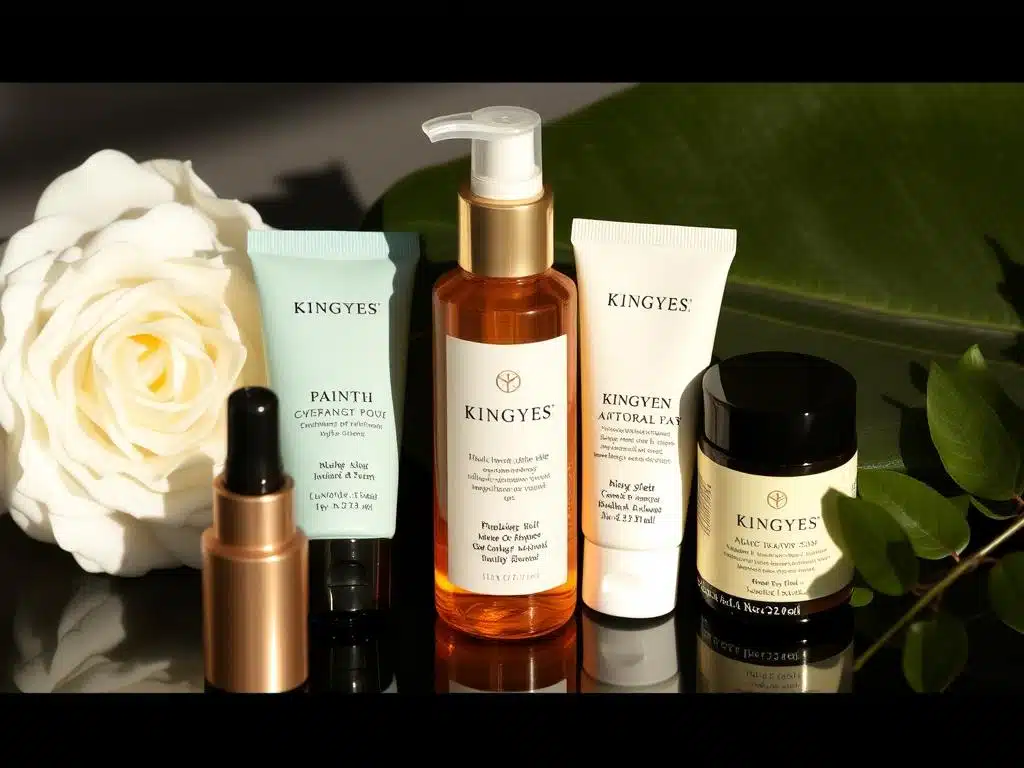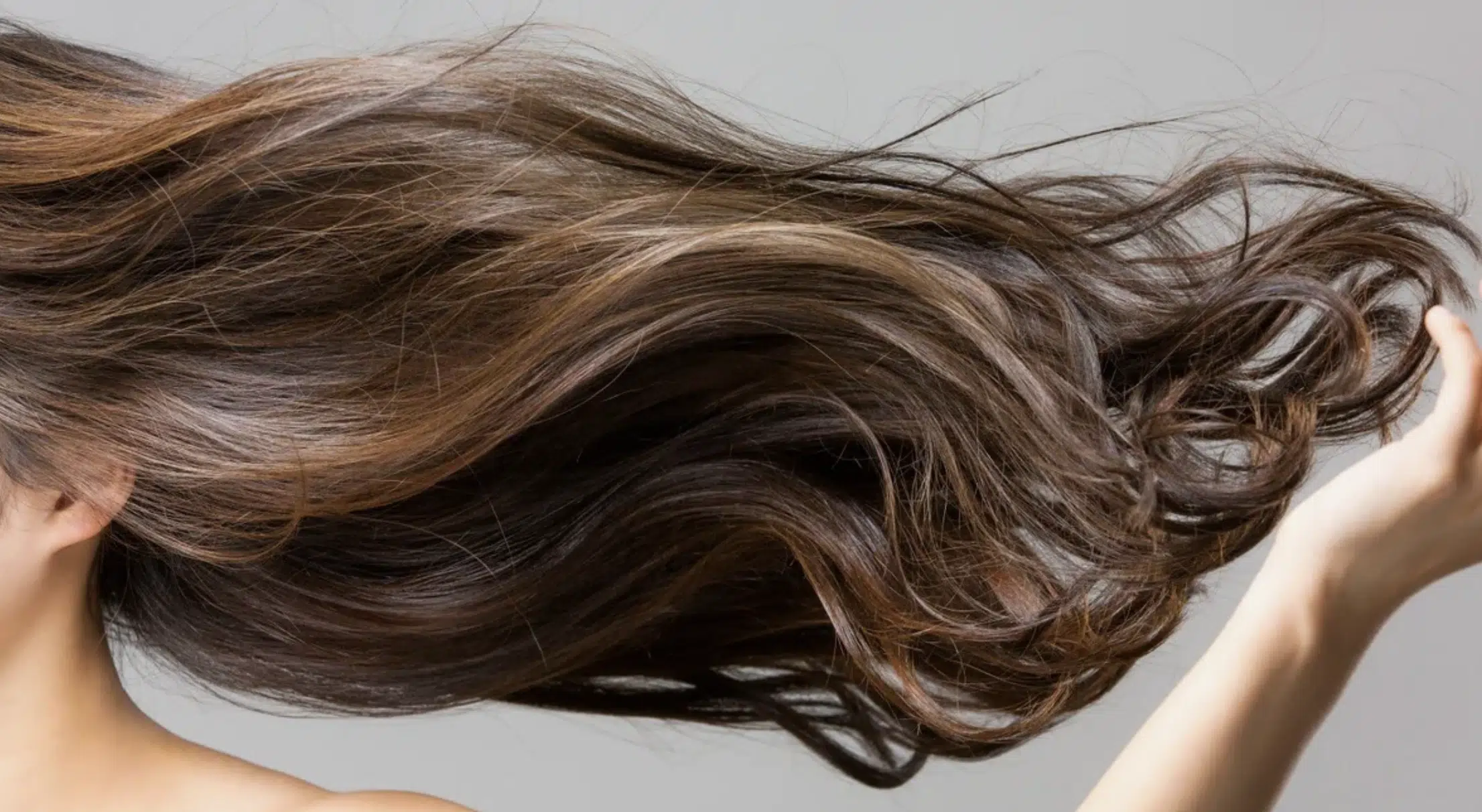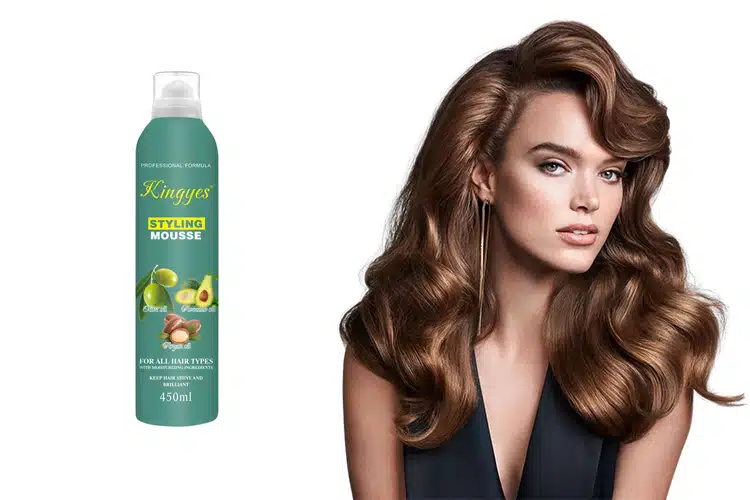
Was bewirken Haarstylingprodukte?
Inhaltsübersicht
Zusammenfassung
Ihre Bedeutung liegt nicht nur in ihrer Fähigkeit, dem Einzelnen zu seinem gewünschten Aussehen zu verhelfen, sondern auch in ihrer Wirkung auf die Gesundheit der Haare und die Integrität der Kopfhaut. Die globale Haarpflege Markt hat ein beträchtliches Wachstum erfahren, das durch die steigende Nachfrage der Verbraucher nach personalisierten und effektiven Lösungen, die die individuelle Identität und Ästhetik widerspiegeln, angetrieben wurde. Dies hat zu einer Vielzahl von Produkten geführt, darunter Gele, Mousses, Wachse und Sprays, die jeweils unterschiedlichen Zwecken dienen und ein unterschiedliches Maß an Halt und Texturkontrolle bieten.
Die bemerkenswerten Aspekte von Haarstylingprodukten gehen über die reine Ästhetik hinaus; sie enthalten oft eine Mischung von Inhaltsstoffen, die der Haargesundheit entweder zugute kommen oder schaden können. Während viele konventionelle Produkte synthetische Chemikalien enthalten, die mit potenziellen Risiken wie Hormonstörungen und Kopfhautreizungen in Verbindung gebracht werden, gibt es einen wachsenden Trend zu natürlichen und biologischen Alternativen, die eine sicherere Anwendung und bessere Haarpflegeergebnisse versprechen.
Die Verbraucher werden sich zunehmend der Inhaltsstoffe dieser Produkte bewusst, was zu einer Nachfrage nach Transparenz und Sicherheit in der Formulierungspraxis führt. Kontroversen um Haarstylingprodukte geht es oft um die chemische Zusammensetzung und die gesundheitlichen Folgen einer langfristigen Anwendung. Die Forschung hat Bedenken hinsichtlich der Prävalenz von Schadstoffen in Formulierungen geäußert, die für bestimmte demografische Gruppen vermarktet werden, insbesondere für farbige Frauen, die höheren Konzentrationen potenziell gefährlicher Chemikalien ausgesetzt sein können.
Dies hat Diskussionen über die Notwendigkeit einer behördlichen Kontrolle und der Aufklärung der Verbraucher über die Sicherheit von Inhaltsstoffen ausgelöst. Da sich die Erwartungen der Verbraucher weiterentwickeln, ist die Haarpflege Die Industrie steht vor der Herausforderung, den unterschiedlichen Bedürfnissen und Vorlieben gerecht zu werden und gleichzeitig Inklusivität und Nachhaltigkeit zu fördern. Innovative Ansätze wie personalisierte Produkte und die Integration von Technologien in die Produktentwicklung werden für die Erfüllung dieser Anforderungen immer wichtiger. Letztlich ist die Diskussion über Haarstylingprodukte wird weiter ausgebaut und unterstreicht die Bedeutung von bewussten Entscheidungen, bei denen sowohl der Stil als auch die Gesundheit im Vordergrund stehen.
Arten von Haarstylingprodukten
Haarstyling-Produkte gibt es in einer Vielzahl von Formen, von denen jede für ein anderes Aussehen und eine andere Wirkung bei verschiedenen Haartypen konzipiert ist. Die Kenntnis der verschiedenen Produkttypen kann den Nutzern helfen, die besten Optionen für ihre Haarstylingbedürfnisse auszuwählen.
Gele
Gele sind Produkte auf Wasserbasis, die dafür bekannt sind, dass sie einen starken Halt und Kontrolle über die Frisur bieten. Sie enthalten Polymere, die einen Film auf dem Haar bilden und dafür sorgen, dass die gewünschte Frisur den ganzen Tag über erhalten bleibt. Gele sind außerdem wasserlöslich, so dass sie sich beim Waschen der Haare leicht entfernen lassen. Viele Gele enthalten Pflegestoffe und UV-Filter, die das Haar vor Schäden schützen können, und sind oft in verschiedenen Stärken erhältlich, die einen unterschiedlich starken Halt bieten.
Mousses
Mousses sind leichte Stylingprodukte, die einen weicheren Halt als Gele bieten. Sie eignen sich besonders gut, um natürlich aussehende Frisuren zu kreieren, das Volumen zu verbessern und Frizz zu bändigen. Mousse kann sowohl auf nassem als auch auf trockenem Haar angewendet werden und ist besonders beliebt, um Beachy-Wellen zu erzielen oder dem Haar Struktur zu verleihen, ohne es zu beschweren. Diese Vielseitigkeit macht Mousse ein Favorit für alle, die einen legeren Look bevorzugen.
Wachse
Wachse sind Produkte auf Ölbasis, die sich hervorragend für die Textur und Definition von Frisuren eignen. Aufgrund von Inhaltsstoffen wie Bienenwachs oder Lanolin haben sie in der Regel eine dickere Konsistenz. Aufgrund des geringen Wassergehalts eignen sich Wachse für einen dauerhaften Halt und die Trennung der Haarsträhnen. Wachse sind ideal für Benutzer, die Frisuren kreieren möchten, die sowohl Flexibilität als auch Struktur erfordern, ohne die Steifheit, die oft mit Gelen verbunden ist.
Sprays
Haarsprays lassen sich in verschiedene Typen einteilen, darunter Stylingsprays und Finishsprays. Styling-Sprays verleihen Frisuren Halt und Definition, während Finishing-Sprays dazu beitragen, eine Frisur zu fixieren, ohne die schweren Rückstände zu hinterlassen, die bei herkömmlichen Sprays auftreten. Gel-Sprays bieten beispielsweise einen mäßigen Halt und sorgen gleichzeitig für Bewegung im Haar, wodurch sie sich sowohl für strukturierte als auch für unordentliche Frisuren eignen.
Andere Werkzeuge und Produkte
Zusätzlich zu diesen Primärprodukten werden verschiedene Stylinggeräte können dabei helfen, die gewünschte Frisur zu erzielen. Hitzestylinggeräte wie Glätteisen und Lockenstäbe sowie Lockenwickler können die Haarstruktur vorübergehend verändern. Chemische Behandlungen wie Dauerwellen und Relaxer bieten dauerhaftere Veränderungen, bergen aber potenzielle Risiken, da sie das Haar bei falscher Pflege schädigen können. Durch die Wahl der richtigen Kombination von Haarstylingprodukten und -werkzeugen können Sie die Textur Ihres Haares verbessern und eine Vielzahl von Looks erzielen, wobei Sie gleichzeitig die Gesundheit Ihres Haares und Ihrer Kopfhaut berücksichtigen.
Wie Haarstylingprodukte funktionieren
Haarstylingprodukte bestehen aus einer Vielzahl von Inhaltsstoffen, die mit den Haarfasern interagieren, um das gewünschte Aussehen zu erzielen und die Frisur zu fixieren. Diese Produkte können anhand ihrer Funktionen in verschiedene Kategorien eingeteilt werden, z. B. Reinigen, Konditionierungund Styling.
Anwendungstechniken
Um die Vorteile von Haarstylingprodukten zu maximieren, ist eine korrekte Anwendungstechnik unerlässlich. Im Allgemeinen wird empfohlen, Stylingprodukte auf leicht angefeuchtetem Haar aufzutragen, um die Aufnahme und Wirksamkeit zu optimieren. Wenn Sie mit einer kleinen Produktmenge beginnen und nach und nach mehr auftragen, können Sie verhindern, dass das Haar beschwert oder übermäßig fettig wird. Auch die Reihenfolge des Auftragens kann das Ergebnis erheblich beeinflussen: Schwerere Produkte sollten zuerst aufgetragen werden, gefolgt von leichteren Formulierungen.
Die Rolle der Inhaltsstoffe
Die Wirksamkeit von Haarstylingprodukten hängt weitgehend von ihren Inhaltsstoffen ab. Die meisten Produkte enthalten Wasser als primäres Lösungsmittel, daneben Tenside, die die Reinigung unterstützen, und Emulgatoren, die Mischungen von nicht mischbaren Substanzen stabilisieren.
Tenside: Sie sind für die Schaumbildung und die Entfernung von Schmutz und Öl aus dem Haar verantwortlich. Zu den gängigen Tensiden gehören Natriumlaurylsulfat und Natriumlaurethsulfat.
Emollients: Öle und Butter spenden Feuchtigkeit, machen das Haar weich und verbessern die Frisierbarkeit.
Feuchthaltemittel: Inhaltsstoffe wie Glycerin ziehen Feuchtigkeit aus der Luft in das Haar und helfen, es mit Feuchtigkeit zu versorgen und Frizz zu reduzieren.
Konditionierer: Diese Verbindungen helfen, das Haar zu entwirren und weich zu machen, und enthalten oft Silikone und Behentrimoniummethosulfat.
Vorübergehende vs. dauerhafte Lösungen
Haarstylingprodukte können sowohl vorübergehende als auch dauerhafte Veränderungen der Haarstruktur und des Aussehens bewirken. So können z. B. Hitzestylinggeräte und texturgebende Sprays für einen sofortigen Look sorgen, aber diese Effekte lassen sich mit der Haarwäsche wieder auswaschen. Im Gegensatz dazu bieten chemische Behandlungen wie Dauerwellen und Relaxer länger anhaltende Ergebnisse, indem sie die Proteinstruktur des Haares verändern. Diese Behandlungen sind jedoch mit Risiken verbunden, wie z. B. einer möglichen Schädigung der Haarintegrität, wenn sie nicht richtig gepflegt werden.
Vorteile der Verwendung von Haarstylingprodukten
Haarstylingprodukte spielen eine entscheidende Rolle, wenn es darum geht, die gewünschte Frisur zu erzielen und gleichzeitig die Gesundheit und Integrität des Haares zu erhalten. Die Vorteile der Verwendung dieser Produkte lassen sich in mehrere Schlüsselbereiche unterteilen.
Anpassung für Haartypen
Einer der Hauptvorteile der Verwendung von Haarstylingprodukten ist die Möglichkeit, sie je nach Haartyp und Vorlieben individuell anzupassen. Personen mit trockenem Haar können beispielsweise feuchtigkeitsspendende Inhaltsstoffe wie Aloe Vera oder Kokosnussöl in ihre DIY-Haargels oder -sprays einarbeiten, um die Feuchtigkeit zu erhöhen. Wer sich mehr Volumen wünscht, kann Produkte mit Meersalz oder Backpulver verwenden. Diese individuelle Anpassung ermöglicht es den Anwendern, zu experimentieren und herauszufinden, welche Formulierungen für ihre spezifischen Haarbedürfnisse am besten geeignet sind.: Sie sind für die Schaumbildung und die Entfernung von Schmutz und Öl aus dem Haar verantwortlich. Zu den gängigen Tensiden gehören Natriumlaurylsulfat und Natriumlaurethsulfat.
Emollients: Öle und Butter spenden Feuchtigkeit, machen das Haar weich und verbessern die Frisierbarkeit.
Feuchthaltemittel: Inhaltsstoffe wie Glycerin ziehen Feuchtigkeit aus der Luft in das Haar und helfen, es mit Feuchtigkeit zu versorgen und Frizz zu reduzieren.
Konditionierer: Diese Verbindungen helfen, das Haar zu entwirren und weich zu machen, und enthalten oft Silikone und Behentrimoniummethosulfat.
Schutz vor Beschädigung
Viele herkömmliche Haarstylingprodukte enthalten synthetische Chemikalien, die die Gesundheit von Haar und Kopfhaut langfristig schädigen können. Der Umstieg auf natürliche und ungiftige Alternativen bietet jedoch erhebliche Schutzvorteile. Diese Produkte tragen dazu bei, Schäden durch schädliche Inhaltsstoffe wie Sulfate und Parabene zu vermeiden, die zu geschwächten Haarfollikeln und Kopfhautreizungen führen können. Die Wahl natürlicher Alternativen fördert ein gesünderes Haarwachstum und verringert die Wahrscheinlichkeit von Schäden und Reizungen.
Verstärkung der natürlichen Textur
Verschiedene Haartypen, wie glattes, gewelltes, lockiges oder krauses Haar, profitieren von speziellen Stylingprodukten, die ihre natürliche Textur betonen. Zum Beispiel Hitzestylinggeräte, Texturierungsspraysund Mousse Die Kenntnis der einzigartigen Struktur des Haares ermöglicht es, die wirksamsten Produkte auszuwählen, die die natürliche Schönheit des Haares betonen und gleichzeitig den Schaden minimieren.
Vielseitigkeit und Styling-Optionen
Haarstylingprodukte bieten die Möglichkeit, eine Reihe von Looks zu kreieren - von glatt und glänzend bis hin zu voluminös und strukturiert. Mit verschiedenen Werkzeugen und Produkten können Sie Ihren Haartyp und Ihre Frisur vorübergehend verändern, um sie an verschiedene Anlässe anzupassen. Außerdem können Techniken wie das Flechten oder Diffundieren natürliche Locken oder Wellen verstärken und die Schönheit des Haares ohne übermäßige Manipulation zur Geltung bringen.
Stärkung und Resilienz
Bestimmte Stylingprodukte enthalten Inhaltsstoffe, die die Haarstruktur und Widerstandsfähigkeit stärken. Bei geschwächtem Haar können proteinreiche Behandlungen helfen, Schäden zu reparieren und die Stärke wiederherzustellen. Darüber hinaus kann die Verwendung von Hitzeschutzprodukten das Haar vor Hitzeschäden durch Stylinggeräte schützen und dafür sorgen, dass das Haar gesund bleibt, während es die gewünschte Frisur erhält.
Überlegungen und Risiken
Bei der Verwendung von Haarstylingprodukten ist es wichtig, die potenziellen Risiken zu berücksichtigen, die mit bestimmten Chemikalien verbunden sind, die häufig in diesen Formulierungen enthalten sind. Untersuchungen zeigen, dass die Exposition gegenüber schädlichen Stoffen zu verschiedenen gesundheitlichen Problemen führen kann, insbesondere im Hinblick auf hormonelle Störungen und die Gesundheit der Kopfhaut. So können beispielsweise Sulfate in einigen Haarprodukten zu trockenem und brüchigem Haar führen, was wiederum zu Spliss und Haarbruch führt. Darüber hinaus kann die längere Verwendung synthetischer Chemikalien die Kopfhaut reizen, was zu Juckreiz, Schuppenbildung und in schweren Fällen zu Haarausfall führen kann.
Chemische Exposition und Gesundheitsrisiken
Die potenziellen Risiken verschärfen sich für bestimmte demografische Gruppen, insbesondere für farbige Frauen, die häufig Produkte mit höheren Konzentrationen problematischer Chemikalien verwenden, die für sie vermarktet werden. In einer Studie wurde festgestellt, dass afroamerikanische Frauen ein erhöhtes Brustkrebsrisiko haben. Die Forscher vermuten, dass dies durch Umweltfaktoren und nicht nur durch genetische Prädispositionen beeinflusst wird. Dies unterstreicht, wie wichtig es ist, das Bewusstsein für die Inhaltsstoffe von Körperpflegeprodukten zu schärfen und diese zu erforschen, insbesondere für diejenigen, die einem höheren Risiko ausgesetzt sind.
Die Bedeutung der Transparenz der Inhaltsstoffe
Um diese Risiken zu mindern, sollten sich die Verbraucher gründlich über die Produkte informieren, die sie wählen. Organisationen wie die Environmental Working Group (EWG) stellen wertvolle Ressourcen zur Verfügung, indem sie Produkte auf der Grundlage ihres Sicherheitsprofils bewerten und es den Verbrauchern so ermöglichen, eine fundierte Wahl zu treffen.Die Rolle natürlicher Alternativen.
Die Rolle der natürlichen Alternativen
Angesichts dieser Risiken entscheiden sich viele für natürliche und biologische Haarpflegeprodukte, die frei von schädlichen Chemikalien sind. Diese Alternativen können Vorteile bieten, ohne die mit synthetischen Inhaltsstoffen verbundenen negativen Auswirkungen. Produkte, die mit natürlichen Ölen und Proteinen angereichert sind, sowie Produkte, die Antioxidantien und Vitamine enthalten, können die Gesundheit der Haare fördern und Schäden mindern. Wenn man die Auswirkungen der Verwendung bestimmter Haarstylingprodukte kennt, kann man sich besser orientieren und seine Gesundheit und sein Wohlbefinden bei der Haarpflege in den Vordergrund stellen.
Verbraucherfeedback und Herausforderungen
Das Feedback der Verbraucher in der Haarstylingbranche zeigt eine wachsende Nachfrage nach personalisierten und innovativen Lösungen, die auf spezifische Bedürfnisse eingehen. Moderne Verbraucher suchen zunehmend nach Produkten, die über traditionelle Marketingbotschaften hinausgehen, und entscheiden sich für solche, die Komfort, Transparenz und einen echten Ausdruck von Individualität bieten. Trends wie saubere Schönheit, multikulturelle Integration und alters- und geschlechtsneutrale Produkte verändern den Markt, wobei der Schwerpunkt eindeutig auf der Erfüllung der unterschiedlichen Verbraucherwünsche liegt.
Die Erwartungen der Verbraucher entwickeln sich
Die Verbraucher, die sich in der komplexen Landschaft der Schönheitsprodukte zurechtfinden, äußern ihre Vorlieben immer deutlicher. Sie erwarten von Marken, dass sie ihre Werte widerspiegeln, zu denen auch Nachhaltigkeit und Inklusivität gehören. Dieser Wandel zeigt sich in der Zunahme veganer Schönheitsprodukte, die als umweltbewusstere Entscheidungen wahrgenommen werden. Darüber hinaus sind die Verbraucher bereit, in höherpreisige Produkte zu investieren, die ihre wichtigsten Haarprobleme wirksam angehen, was trotz der wirtschaftlichen Unsicherheit eine Verschiebung des Kaufverhaltens zeigt.
Die Rolle der Technologie
Die Technologie hat sich zu einem Schlüsselakteur bei der Verbesserung der Verbrauchererfahrungen im Schönheitssektor entwickelt. Marken wie Function of Beauty und Prose nutzen interaktive Online-Quizze, um Produkte auf individuelle Bedürfnisse zuzuschneiden und sich von Einheitslösungen zu verabschieden. Auch Luxusmarken nutzen die Technologie, wie zum Beispiel das Tool für individuelle Lippenstifte von Yves Saint Laurent, mit dem Verbraucher ihre eigenen Farbtöne kreieren können. Dieser personalisierte Ansatz erfüllt nicht nur spezifische Verbraucherwünsche, sondern fördert auch eine tiefere Verbindung zwischen Marken und ihren Kunden.
Herausforderungen für die Verbraucher
Trotz des fortschrittlichen Produktangebots stehen die Verbraucher vor der Herausforderung, sich in der Haarpflegelandschaft zurechtzufinden. Auch die Preissensibilität stellt eine Herausforderung dar, denn die Verbraucher bevorzugen günstigere Produkte, die dennoch Premiumqualität versprechen, vor allem angesichts der zunehmenden Inflation. Darüber hinaus hat die Verbreitung sozialer Medien zu einem schnelllebigen Umfeld geführt, in dem sich Marken ständig an wechselnde Trends und Verbraucherwünsche anpassen müssen. Dies kann den Druck auf die Unternehmen erhöhen, schnell zu reagieren, was manchmal auf Kosten der Authentizität und Tiefe der Produktentwicklung geht. Letztendlich müssen sich die Marken bei der Weiterentwicklung des Schönheitsmarktes weiterhin dafür einsetzen, die unterschiedlichen Bedürfnisse der Verbraucher zu verstehen und zu erfüllen, um sicherzustellen, dass sich jeder Einzelne in seiner Kaufentscheidung anerkannt und wertgeschätzt fühlt.
Kommentare

Wie man die richtige Haarbürste auswählt
Haarstylingprodukte sind spezielle Formulierungen, die dazu dienen, Frisuren zu verändern, zu verbessern und zu pflegen, und die für eine Vielzahl von Haartypen und Stylingvorlieben geeignet sind.

Was ist die Regel beim Haarefärben?
Um professionell aussehende Ergebnisse zu erzielen, ist es wichtig, die grundlegenden Regeln der Haarfärbung zu kennen - egal, ob Sie ein Heimwerker oder ein professioneller Friseur sind.

Wie verkauft man Kosmetika auf WeChat?
Sind Sie bereit, den größten Schönheitsmarkt der Welt zu erschließen?

Can You Color Your Hair When You’re Pregnant? A Safe Guide
Are you pregnant? Do you want to dye your hair? You are not alone. Many moms worry about this. Is it safe? Will it hurt my baby? Let’s find out.

Was ist der Unterschied zwischen einem nassen und einem trockenen Deodorant?
Haben Sie sich schon einmal im Deo-Gang gefragt, was der Unterschied zwischen einem feuchten und einem trockenen Deo ist?
- +86 151 1839 7303
- [email protected]
- Mo-So 07:00-23:00
Tags

Forest-scented antiperspirant02
Floral scented antiperspirant02.
Fruit-flavored antiperspirant02.

Hair Brush Comb Anti-Static Relaxing Scalp Massage4
Speeding Hair Style Hold Spray 1.
Neck Duster Brush 57.
Hair removal cream0944.

Hair removal cream3421
Rasieren tut weh.
Hair styling mousse9011.
By tomorrow? The hair is back.







